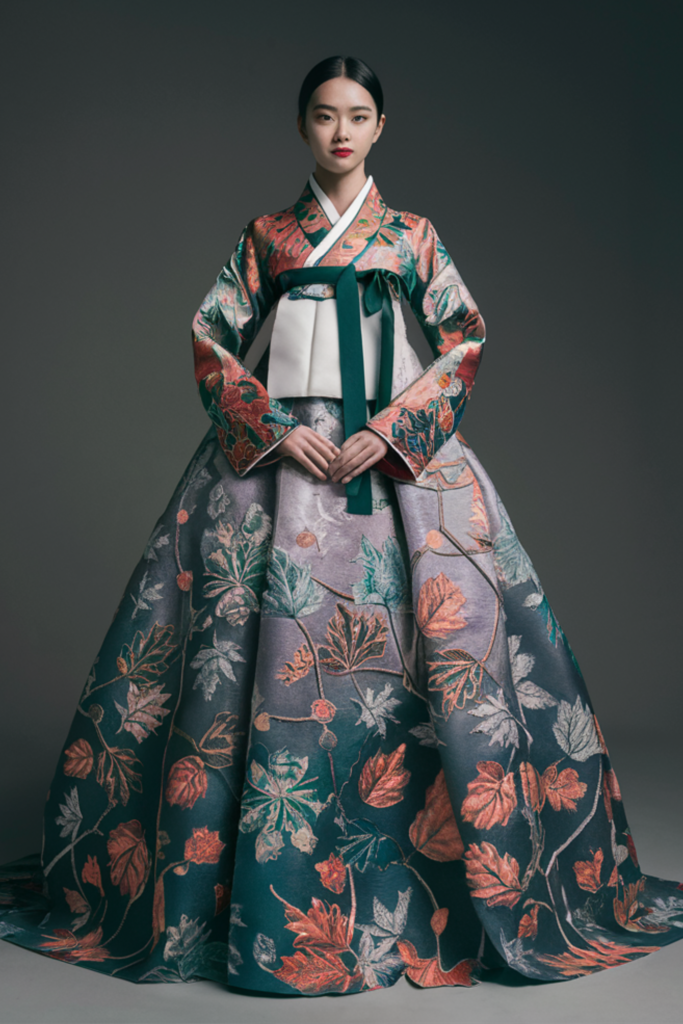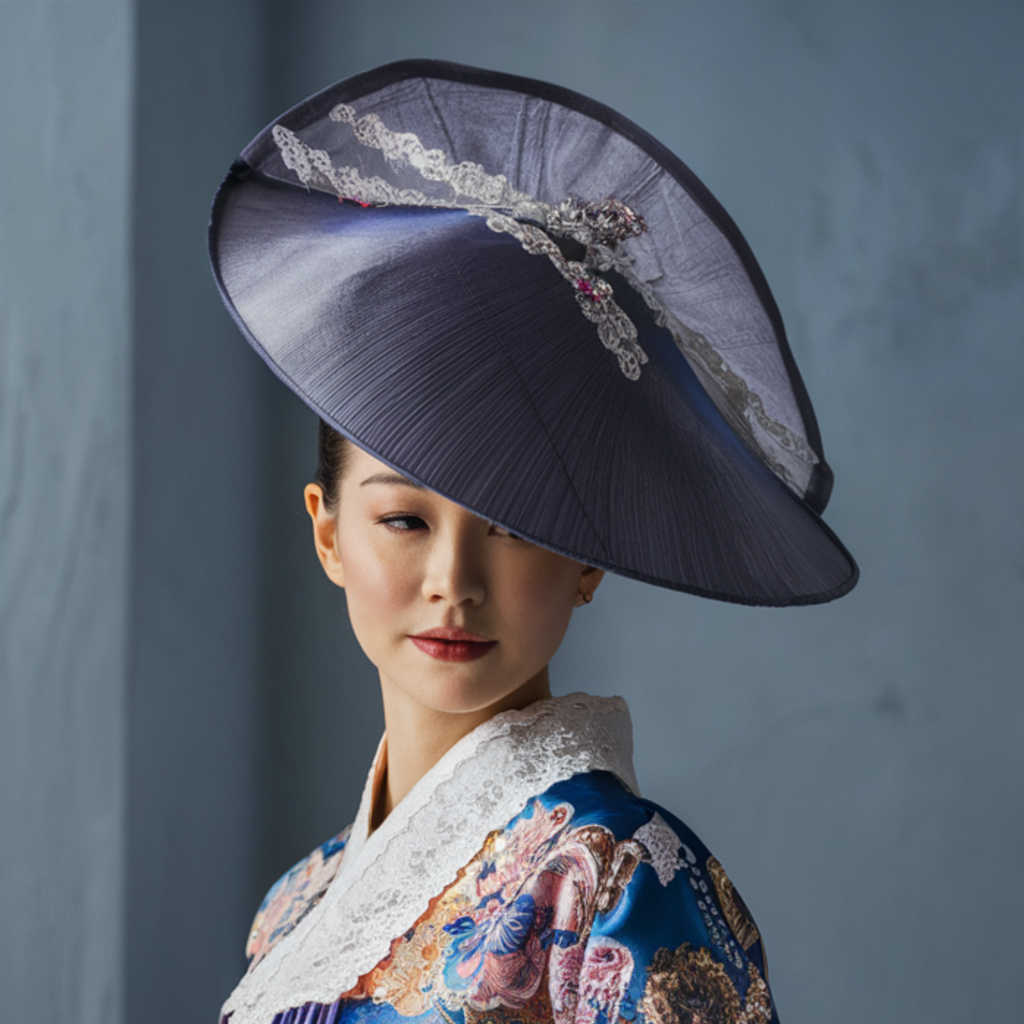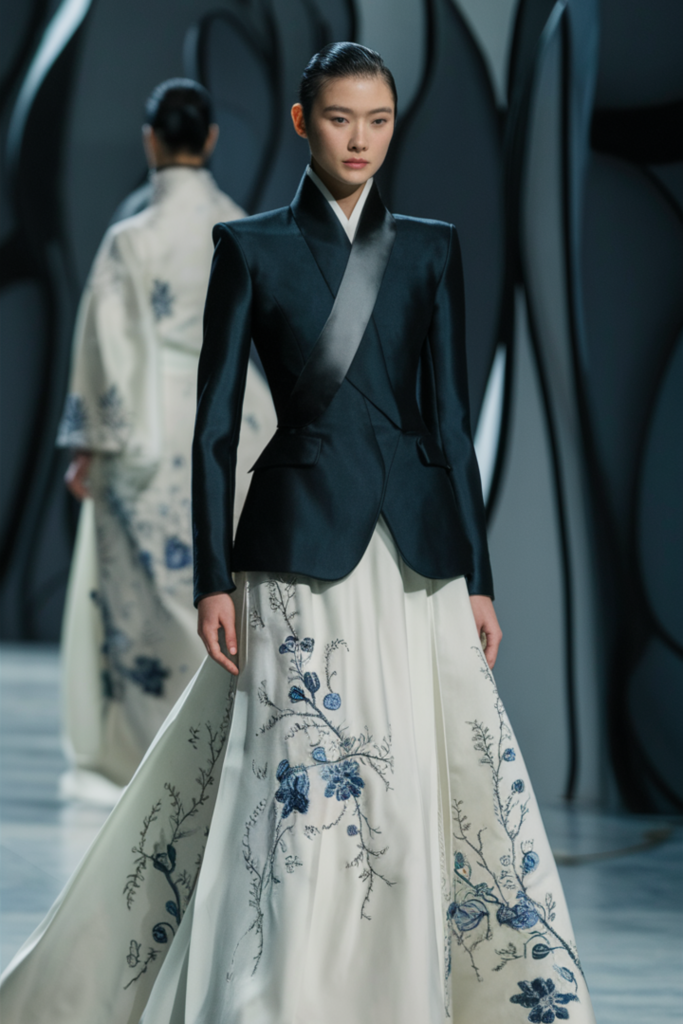Seasonal Hanbok: The Art of Transitioning from Summer to Autumn
Imagine a wardrobe that doesn’t just follow the seasons, but dances with them. That’s the magic of the seasonal hanbok. As summer’s scorching days mellow into autumn’s golden afternoons, the Korean traditional attire undergoes its own bewitching metamorphosis. For a deeper dive into how hanbok evolves with the seasons, check out our article on The Art of Seasonal Hanbok: Transitioning from Summer to Autumn.
You might think, “It’s just clothes, right?” Oh, how wrong you’d be! Korea’s seasonal hanbok is like a living, breathing calendar, marking time not with numbers, but with the whisper of silk and the shimmer of embroidery. It’s a sartorial spectacle that captures the very essence of nature’s most captivating transition.
Ever noticed how the air feels different as summer gives way to fall? That’s exactly what seasonal hanbok aims to embody. It’s not just about swapping out fabrics or changing colors. No, no, no! It’s about capturing that ineffable moment when the world holds its breath, balanced between the memory of summer and the promise of autumn.
From the subtle shift in hues – think fading blues of summer skies morphing into the warm golds of autumn leaves – to the clever layering that hints at cooler days to come, every aspect of transitional hanbok is a masterclass in aesthetic adaptation.
So, ready to discover how Korean designers turn fabric into a time capsule of seasonal change? Buckle up, fashion aficionados and culture vultures! We’re about to embark on a journey through the most stylish season of all – the season of change itself. Welcome to the art of transition, hanbok style!
Understanding Seasonal Hanbok
What is Seasonal Hanbok?


Seasonal hanbok is Korea’s ingenious answer to dressing for the weather while maintaining cultural elegance. It’s not simply about switching wardrobes as the calendar changes. Rather, it’s a sophisticated adaptation of traditional Korean attire that reflects nature’s shifting moods.
These garments capture the essence of each season – from the vivid floral colors of summer to the rich golds of autumn. Seasonal hanbok serves as a wearable testament to nature’s ever-changing palette, allowing wearers to harmonize with the world around them through their clothing choices. For a broader understanding of Korean fashion, including both traditional and modern styles, check out our Complete Guide to K-Style Fashion: A Tapestry of Tradition and Modernity.
The Importance of Transitional Periods in Hanbok Design
The transitional periods between seasons are where hanbok designers truly showcase their creativity. Like a sartorial chameleon, hanbok adapts to its surroundings with both style and cultural significance.
These transitions are crucial because they embody the concept of harmony so central to Korean culture. Nature doesn’t abruptly switch from summer to fall, and neither does hanbok. The gradual shift in colors, fabrics, and designs mirrors the natural world’s own transformation. It’s during these in-between times that you’ll encounter some of the most innovative and captivating hanbok designs, bridging the gap between seasons with artistic flair. To delve deeper into the warm color palette of fall hanbok, check out our article on Autumn’s Palette: 5 Timeless Warm Tones for Fall Seasonal Hanbok.
Characteristics of Summer and Autumn Hanbok
Summer Hanbok: Colors, Fabrics, and Motifs

Summer hanbok embodies the season’s light and vitality. The color palette draws inspiration from nature at its most vibrant – think lush greens reminiscent of fertile fields, blues that echo clear summer skies, and pinks that mirror the delicate hue of cherry blossoms.
The true stars of summer hanbok are the fabrics. Lightweight materials like ramie and translucent silk take center stage, offering comfort in the heat while maintaining an ethereal elegance. These airy fabrics allow the hanbok to move with a grace that seems to capture the essence of summer breezes.
Motifs in summer hanbok celebrate the season’s abundance. Delicate butterflies might flit across sleeves, while lush peonies bloom on skirts. These designs transform the hanbok into a wearable summer garden, each garment telling a story of the season’s natural beauty.
Autumn Hanbok: Palette, Textures, and Symbolism

As the seasons shift, autumn hanbok unveils a different facet of beauty. The color palette deepens, mirroring the changing natural world – rich burgundies, warm golds, and earthy browns dominate, evoking the hues of falling leaves and harvest bounty.
Textures evolve to meet the cooler weather, with heavier silks and even touches of velvet making appearances. Autumn hanbok offers a tactile experience that’s as pleasing to the touch as it is to the eye, providing warmth and style in equal measure.
Symbolism takes center stage in autumn hanbok designs. Chrysanthemums, emblematic of the season, feature prominently. You might find intricate embroideries of pine trees, representing steadfastness amidst change. Maple leaf motifs also abound, their iconic shape capturing the very essence of autumn on fabric.
In the realm of seasonal hanbok, the transition from summer to autumn is more than a mere change of wardrobe. It’s a nuanced celebration of nature’s rhythm, expressed through the artistry of traditional Korean attire.
The Art of Transition in Hanbok Design
Blending Summer and Autumn Elements
The transition from summer to autumn in hanbok design is a delicate dance of elements. Designers masterfully weave the lightness of summer with the richness of autumn, creating garments that bridge the gap between seasons. You might see a hanbok with the airy silhouette of summer, but in deeper, more autumnal hues. Or perhaps a design that incorporates both summer’s floral motifs and autumn’s leaf patterns, telling the story of seasonal change in a single garment.
Color Theory in Transitional Hanbok

Color plays a crucial role in transitional hanbok. Designers employ a sophisticated understanding of color theory to create harmonious blends that evoke both seasons. These color choices are often paired with traditional nature motifs for fall seasonal hanbok to create cohesive seasonal designs. They might pair the last blush of summer’s pink with the first gold of autumn leaves, or combine the fading blue of summer skies with the deepening green of pine needles. These thoughtful color combinations serve as a visual representation of nature’s gradual transformation.
Incorporating Autumn Motifs into Late Summer Designs
The incorporation of autumn motifs into late summer designs is where hanbok truly shines as a form of artistic expression. A summer hanbok might feature a subtle border of chrysanthemums, hinting at the approaching autumn. Or perhaps a traditionally summer-weight fabric might be embroidered with the first fallen leaves. These design choices create a sense of anticipation, a sartorial whisper of the changing seasons.



Fabric Choices for Transitional Hanbok
Versatile Materials for Changing Seasons
The choice of fabric is paramount in creating transitional hanbok. Designers opt for materials that can adapt to fluctuating temperatures. Silk, with its natural temperature-regulating properties, is a popular choice. You might also see the use of lightweight wool blends, offering warmth without bulk. These versatile fabrics ensure comfort whether the day brings lingering summer heat or the first crisp breezes of autumn.
Layering Techniques for Adaptability
Layering is an art form in transitional hanbok design. A summer-weight jeogori might be paired with a slightly heavier chima, allowing for easy adaptation to changing temperatures. Designers also create pieces that can be easily added or removed, such as detachable sleeves or overskirts. This layering approach allows wearers to adjust their hanbok throughout the day, responding to both fashion needs and weather changes.
Innovative Fabric Combinations
Innovation shines in the fabric combinations of transitional hanbok. Designers experiment with mixing textures and weights to create visually interesting and functionally adaptive garments. You might see a hanbok that combines crisp summer cotton with panels of richly textured autumn silk, or one that uses transparent summer fabrics layered over more substantial autumn materials. These combinations not only serve a practical purpose but also create depth and visual interest in the design.
Accessorizing Transitional Hanbok


Versatile Accessories for Changing Weather
Accessories play a vital role in transitional hanbok, offering both style and functionality. Designers create versatile pieces like reversible norigae (ornamental tassels) that feature summer motifs on one side and autumn on the other. Lightweight scarves or shawls in autumnal colors can be added to summer hanbok, easily transforming the look for cooler evenings.
Shifting Seasonal Feel Through Accessories
The power of accessories to shift the seasonal feel of hanbok cannot be overstated. A summer hanbok can be given an autumnal touch with the addition of a richly colored belt or a set of leaf-shaped hair pins. Conversely, an autumn hanbok might retain a hint of summer with the use of floral-patterned shoes or a light, airy veil. These small changes allow for subtle yet effective seasonal transitions.
Traditional vs. Modern Accessory Choices
The world of hanbok accessories beautifully bridges tradition and modernity. While traditional accessories like the jobawi (women’s hat) or the gat (men’s hat) remain popular, modern interpretations are also emerging. You might see a traditional norigae reimagined as a sleek, minimal pendant, or a classic binyeo (hair pin) given a contemporary twist with modern materials. This blend of old and new in accessory choices reflects the evolving nature of hanbok itself, honoring tradition while embracing innovation.
Cultural Significance of Seasonal Transitions
Historical Perspectives on Seasonal Clothing Changes
The tradition of seasonal hanbok transitions is deeply rooted in Korean history. Our ancestors understood the importance of dressing in harmony with nature. Seasonal hanbok wasn’t just about comfort; it was a reflection of the Korean philosophy of living in balance with the natural world. Historical records show how the royal court would change their hanbok styles to mark the changing seasons, a practice that eventually spread to the common people.
Symbolism in Transitional Hanbok Designs
Transitional hanbok designs are rich in symbolism. The gradual shift from summer to autumn motifs represents more than just a change in weather. It symbolizes the cycle of life, the passing of time, and the importance of adapting to change. The incorporation of certain flowers or animals in seasonal hanbok designs often carries deep cultural meanings, telling stories of resilience, hope, and the beauty of impermanence.
Reflecting Korean Values in Seasonal Adaptations
The adaptability of seasonal hanbok reflects core Korean values of harmony and respect for nature. The thoughtful transitions between seasons in hanbok design mirror the Korean appreciation for the subtle changes in the natural world. This attention to seasonal shifts in clothing demonstrates the cultural importance of being attuned to one’s environment and the passage of time. To delve deeper into these cultural aspects, explore our Korean Culture Guide: Decoding Korea’s Rich Heritage.
Modern Interpretations of Transitional Hanbok
Contemporary Designers’ Approaches
Modern designers are reimagining seasonal hanbok for contemporary life. They’re experimenting with new materials and techniques while respecting traditional aesthetics. Some designers are creating modular seasonal hanbok that can be easily adapted as the weather changes. Others are incorporating high-tech, temperature-regulating fabrics into traditional designs, marrying ancient styles with modern innovation. Learn more about the innovators shaping Korean fashion in our article on the Top 10 Korean Fashion Designers Who Revolutionized K-Style.
Fusion Styles: Blending Traditional and Modern



Fusion styles are becoming increasingly popular in seasonal hanbok design. Designers are mixing elements of traditional hanbok with contemporary fashion trends, creating pieces that are both culturally rich and modern. These fusion styles make seasonal hanbok more accessible for everyday wear, allowing people to incorporate traditional elements into their daily wardrobes as the seasons change.
Incorporating Transitional Hanbok into Everyday Wear
The resurgence of interest in hanbok has led to creative ways of incorporating seasonal hanbok elements into everyday wear. From hanbok-inspired jackets that transition perfectly from summer to fall, to modern interpretations of traditional accessories that add a seasonal touch to any outfit, designers are making it easier than ever to embrace the beauty of seasonal hanbok in contemporary life.
Conclusion: The Timeless Art of Seasonal Hanbok
Seasonal hanbok represents more than just a change in clothing; it’s a celebration of Korea’s rich cultural heritage and deep connection to nature. As we’ve explored, the art of transitioning hanbok from summer to autumn is a delicate balance of color, fabric, and design. It’s a testament to the creativity and ingenuity of Korean designers, both past and present.
From the subtle shift in colors to the clever use of layering techniques, seasonal hanbok captures the essence of change. It reminds us of the beauty in transition, the importance of adaptability, and the enduring elegance of Korean traditional dress. 000
As we move forward, seasonal hanbok continues to evolve, bridging the gap between tradition and modernity. It serves as a beautiful reminder of our connection to the natural world and the changing seasons. Whether you’re a fashion enthusiast, a cultural explorer, or simply someone who appreciates the artistry of clothing, seasonal hanbok offers a unique and captivating perspective on the intersection of culture, nature, and design.





